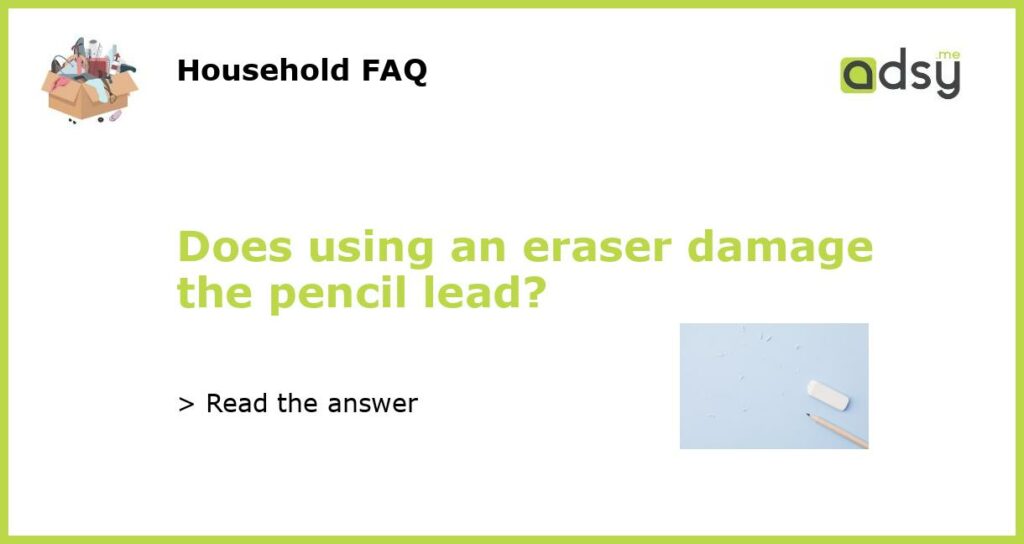The Appeal of Using Pencil and Eraser
For centuries, the combination of pencil and eraser has been a staple in schools and offices around the world. The simplicity and ease of use make them preferred choices for writing and drawing endeavors. However, many users have often wondered if using an eraser can damage the pencil lead. In this article, we will explore the relationship between pencil and eraser to determine if erasing does indeed harm the pencil lead.
The Composition of Pencil Lead and Erasers
To understand the potential impact of erasing on pencil lead, it is important to first examine the materials that make up both components. Pencil leads are typically composed of a mixture of graphite and clay. The ratio of graphite to clay determines the hardness of the lead (ranging from H for hard to B for soft). On the other hand, erasers are usually made of a synthetic rubber called vinyl or a material called gum latex. These materials are designed to be soft and malleable, allowing them to effectively remove markings from paper.
The Eraser Effect on Pencil Lead
Contrary to popular belief, using an eraser does not inherently damage the pencil lead. When an eraser is applied to paper, it creates friction against the surface, causing the graphite particles to stick to the eraser material. This is what allows the marks to be removed. However, during the erasing process, some small graphite particles may become lodged in the eraser, causing it to darken over time. While this may affect the visual appearance of the eraser itself, it does not directly harm the pencil lead.
Factors that Can Potentially Damage Pencil Lead
Though erasing per se does not damage the pencil lead, there are other factors that can lessen its longevity. Excessive force while erasing, such as pressing too hard or using abrasive erasers, can cause the pencil lead to break or become worn down more quickly. Additionally, environmental conditions such as high levels of humidity or extreme temperatures can affect the quality of the pencil lead. These factors should be taken into consideration when aiming to preserve the longevity of pencil lead.
Tips for Preserving Pencil Lead and Extending Pencil Life
To ensure the pencil lead remains in good condition, there are several tips that can be followed. First, using a light touch when erasing can prevent excessive force on the pencil lead. It is also recommended to use a soft eraser that is gentle on the paper surface. Additionally, storing pencils in a dry and cool environment can help prevent premature breakage or wear. Regularly sharpening pencils and rotating their usage can distribute the wear evenly across the lead, extending the life of the pencil.






